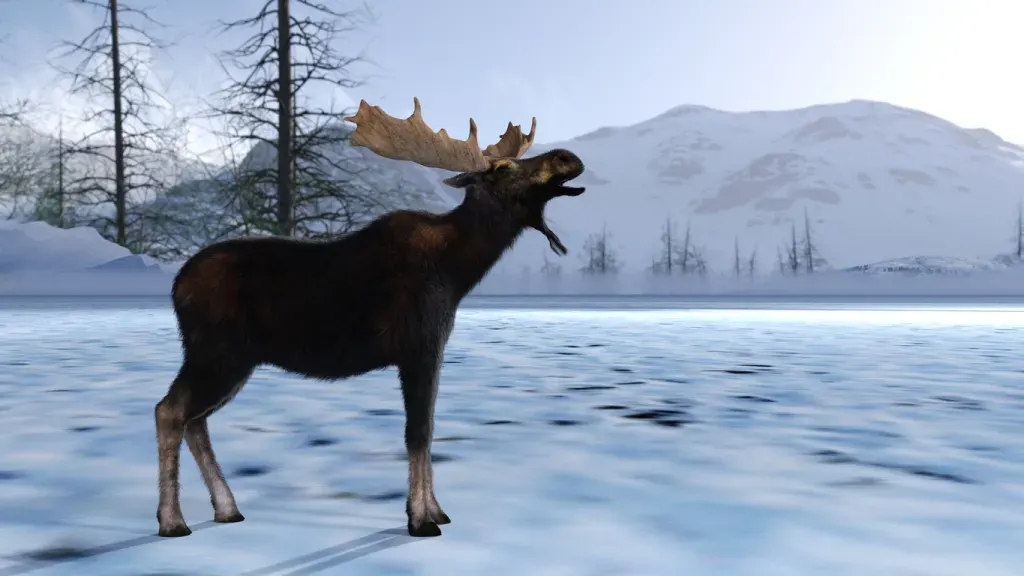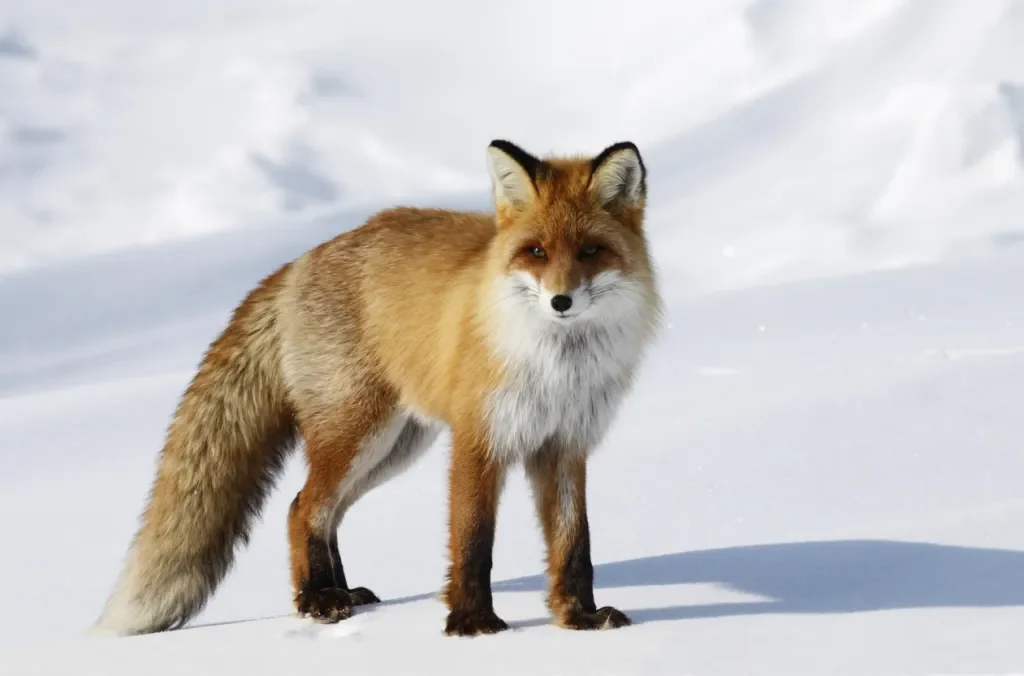Denali is one of the more remote national parks, and it also happens to be one of the most dangerous.
This beautiful scenery is well worth a visit. But even if you prepare for the steep cliffs and extreme weather, you’ll still need to watch for wildlife.
Today we’ll talk about the scariest animals you may encounter in the Alaskan boonies.
Let’s explore!

Denali National Park Is the Most Dangerous Park in Alaska
Denali is a vast and remote wilderness area. It features rugged terrain, deep valleys, and towering mountains. The size of the park and limited infrastructure make it challenging for search and rescue operations when emergencies occur.
This park also has the highest peak in North America, a climb for only the most experienced mountaineers. High winds, sudden weather changes, and heavy snowfall can complicate things quickly.
Environmental exposure is the number one cause of death for visitors, and falls are the second most common. You may be mistaken if you think you’ll be safe going for a relaxing swim. Several people have drowned in recent years.
It also has a lack of good roads. If you’re not used to driving off-road, you could injure yourself in a car accident. And if something happens, you may have trouble getting medical assistance or other essential services.
But because it’s so remote, it also has a lot of wildlife for you to observe. Unfortunately, some of these critters make Denali National Park so dangerous.
#1 Grizzly Bears
Grizzlies are one of the largest predators in North America. You know you’re looking at one if you see the distinctive hump on its back.
Adult males can weigh up to 1,500 pounds. They’re also surprisingly fast. Most can sprint 35 mph over short distances. You’re more likely to see them in the spring and summer months, their mating season.
By July, they’re eating almost nonstop to prepare for winter. They’ll also eat just about anything, so be wary of how you store your food.
Why Grizzly Bears Are Dangerous
Their sheer size, strength, and agility make them capable of doing a lot of harm if they feel threatened or provoked. These animals are very protective of their cubs and territory. If one decides you’re a threat, it may get belligerent to defend itself or its babies.
It’s essential to approach grizzlies with caution and respect. Depending on previous experiences, food availability, and other environmental factors, some may be more aggressive.
Grizzlies aren’t just in Alaska: 7 Most Dangerous Creatures in Grand Teton National Park.
#2 Black Bears
Black bears may not be as big as grizzlies, but they’re far more widespread. As many as 3,000 of these dangerous creatures live throughout Denali National Park. While they can vary in color, most in this region will be brown.
However, they don’t have the distinctive hump and are generally smaller than their cousins.
Why Black Bears Are Dangerous
Black bears are strong and agile. They can scale a tree in seconds. It’s possible you won’t be able to run or climb away from a dangerous encounter.
They’re also becoming less scared of humans, especially in areas where they depend on scavenging for food. If you happen to surprise one, it’s a good idea to have a can of bear spray ready. But only use it in extreme emergencies.
Of course, you’re going to want to photograph all these dangerous creatures – from a distance. Learn how with Denali National Park Guide to Hiking, Photography & Camping.
#3 Marmots
These unusual critters look like giant squirrels, which is pretty much what they are. The hoary marmots are about ten pounds and two and a half feet long. Their light brown and white coloring helps them blend in perfectly with the rocks in the area.
Marmots are herbivores that prefer to avoid humans. They’re also a typical snack for other scary animals like grizzlies. These playful creatures live in colonies and like to groom each other and vocalize.
Why Marmots Are Dangerous
While their teeth can do a lot of damage, the odds are low that a marmot will attack you. But if you make them mad or surprise them, they might decide to go after you.
So what makes these little furballs one of the most dangerous in Denali National Park? They can do a lot of damage to your vehicle if you happen to hit one. What’s worse, you may find yourself stranded with no one to get help.
Watching for wildlife closely when driving in remote places and slowing down is a good idea.
#4 Moose
Moose are some of the largest animals in North America. They measure almost seven feet tall and nearly 1,600 pounds. Unlike other deer-like species, they’re generally solitary animals. Additionally, their antlers can span up to six feet. You certainly don’t want to get caught on the wrong end of them.
It’s best to admire these friendly-looking creatures from afar as they’re among the most dangerous in Denali National Park.
Why Moose Are Dangerous
Moose are fearless and can get aggressive very quickly. Males are incredibly grouchy in the fall during the rut. Females won’t hesitate to charge if they think that you’re a threat to their babies. But sometimes stress can make any animal dangerous.
Don’t get too close to a moose. If it stops eating to stare at you, clicks its teeth, or pees, it may be preparing to charge. That means it’s time to back up and run. While you’re at it, get behind a tree or something else that can protect you.
Moose also cross the road on a whim, and hitting them with your car could be fatal for both you and them.
More about camping with moose: Are Moose Dangerous When You’re Camping?

#5 Red Foxes
Red Foxes look similar to wolves and coyotes but much smaller. Despite the name, they can also be black, silver, or white. Unlike other canines, they’re mainly solitary. They’re very defensive of their territory and sometimes kill other species of foxes.
Though they look cute, they’re nothing like your pet dogs. They actually have many feline characteristics, including their claws and teeth. In fact, they’re sometimes called the “cat-like canine.”
Why Red Foxes Are Dangerous
Most foxes know it’s an unfair fight when they see a human. Of course, it may attack if you try to capture or pet it.
Unfortunately, rabies is on a dangerous rise in Denali National Park. A sick animal may exhibit unusual behavior and act much more aggressively than usual. Rabies can be deadly if it goes untreated. It’s best to seek treatment as soon as possible after wild animal bites.
The more significant threat is when foxes bite dogs, who then go on to bite a human. The unknown exposure is far more deadly because some people delay visiting the doctor. Getting medical attention after any animal bites you is a good idea.
Prepare For Dangerous Creatures in Denali National Park
This untouched land is spectacular if you love long summer days or endless winter nights. But prepare for all the dangerous elements you might encounter in Denali National Park. That way, when you safely return home, you’ll have memories to share with family and friends.
So pack up your emergency gear and brush up on your survival skills. Then make a plan to visit this beautiful remote destination.
We’ll Help You Find the Best Free Camping in the USA
You should give it a try!
As a matter of fact, these free campsites are yours to enjoy. Every time you pay federal taxes, you’re contributing to these lands.
Become a FREE CAMPING INSIDER and join the 100,000 campers who love to score the best site!
We’ll send you the 50 Best Free Campsites in the USA (one per state). Access the list by submitting your email below: